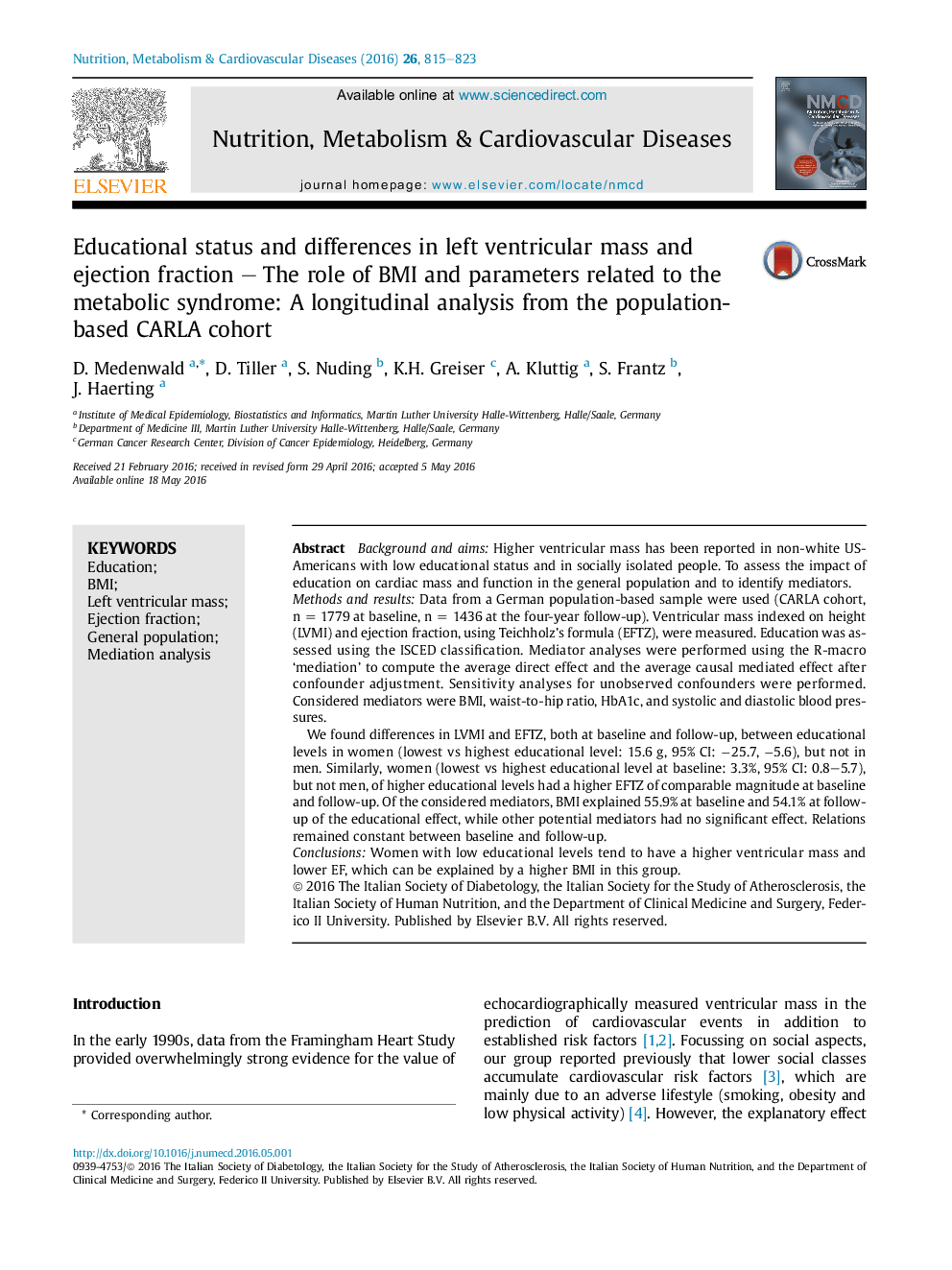| کد مقاله | کد نشریه | سال انتشار | مقاله انگلیسی | نسخه تمام متن |
|---|---|---|---|---|
| 5996377 | 1180662 | 2016 | 9 صفحه PDF | دانلود رایگان |

- We found a higher left ventricular mass and lower ejection fraction in subjects with a low educational level in a sample of the general population.
- Relations remained constant during a four year follow-up.
- Considering parameters of the metabolic syndrome, BMI could explain more than 50% of the educational effect on ventricular mass and ejection fraction.
- Further parameters including blood pressure and HbA1c had no explanatory effect.
Background and aimsHigher ventricular mass has been reported in non-white US-Americans with low educational status and in socially isolated people. To assess the impact of education on cardiac mass and function in the general population and to identify mediators.Methods and resultsData from a German population-based sample were used (CARLA cohort, n = 1779 at baseline, n = 1436 at the four-year follow-up). Ventricular mass indexed on height (LVMI) and ejection fraction, using Teichholz's formula (EFTZ), were measured. Education was assessed using the ISCED classification. Mediator analyses were performed using the R-macro 'mediation' to compute the average direct effect and the average causal mediated effect after confounder adjustment. Sensitivity analyses for unobserved confounders were performed. Considered mediators were BMI, waist-to-hip ratio, HbA1c, and systolic and diastolic blood pressures.We found differences in LVMI and EFTZ, both at baseline and follow-up, between educational levels in women (lowest vs highest educational level: 15.6 g, 95% CI: â25.7, â5.6), but not in men. Similarly, women (lowest vs highest educational level at baseline: 3.3%, 95% CI: 0.8-5.7), but not men, of higher educational levels had a higher EFTZ of comparable magnitude at baseline and follow-up. Of the considered mediators, BMI explained 55.9% at baseline and 54.1% at follow-up of the educational effect, while other potential mediators had no significant effect. Relations remained constant between baseline and follow-up.ConclusionsWomen with low educational levels tend to have a higher ventricular mass and lower EF, which can be explained by a higher BMI in this group.
Journal: Nutrition, Metabolism and Cardiovascular Diseases - Volume 26, Issue 9, September 2016, Pages 815-823